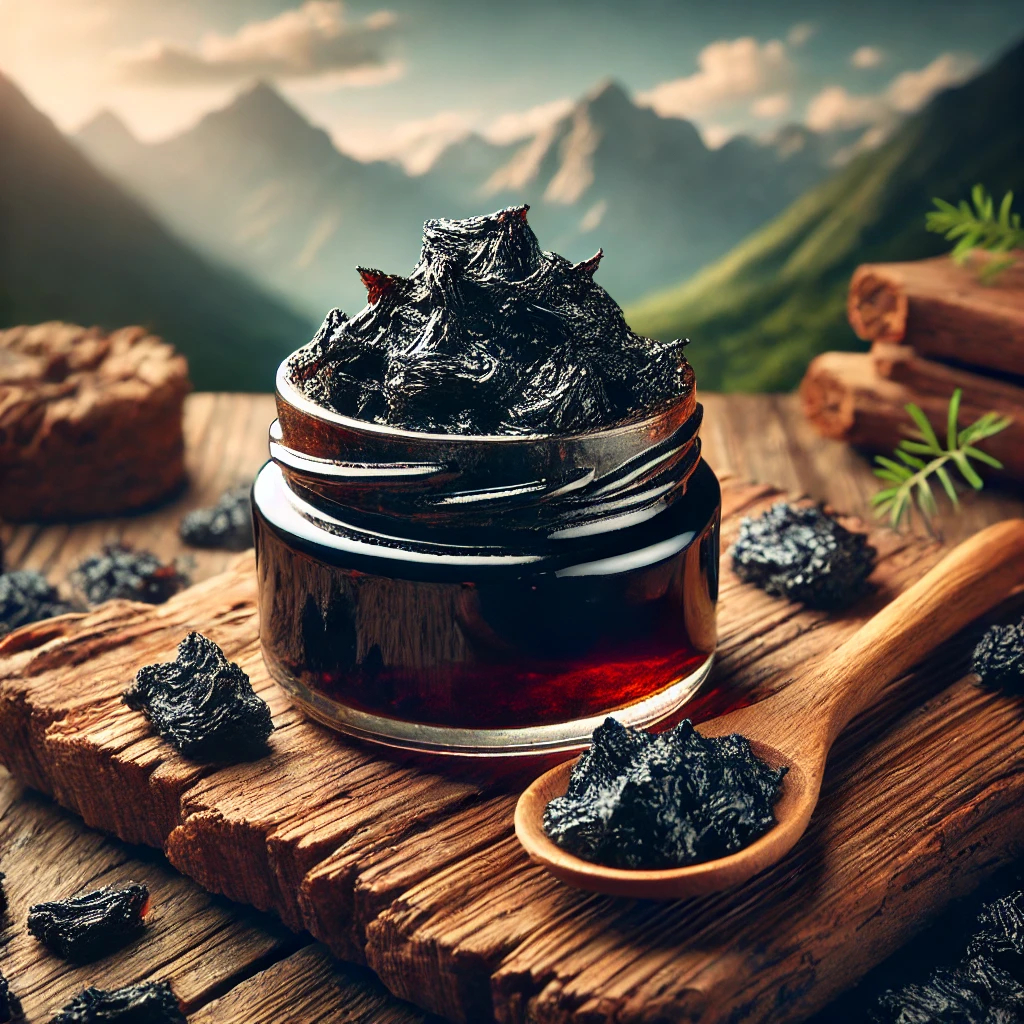How to Identify Pure Shilajit: Fake vs. Authentic
Introduction
Shilajit, a powerful resin found in the Himalayan and Altai mountains, has been a cornerstone of Ayurveda for centuries. Known for its rich mineral content and high fulvic acid levels, pure Shilajit is revered for its numerous health benefits, including boosting energy, improving cognitive function, enhancing stamina, and promoting overall wellness. However, due to its increasing demand, the market is flooded with fake and adulterated Shilajit products.
Consuming impure or synthetic Shilajit can be harmful and may deprive you of its true benefits. Therefore, it is essential to know how to distinguish pure Shilajit from counterfeit or low-quality versions. This guide will help you identify authentic Shilajit through various tests, characteristics, and purchasing guidelines.
1. Understanding Shilajit: Composition and Benefits
What is Shilajit?
Shilajit is a sticky, tar-like substance formed over centuries from the decomposition of plant and microbial matter under high pressure in mountainous regions. Rich in fulvic acid, humic acid, and over 80 trace minerals, it is known for its adaptogenic, anti-inflammatory, and rejuvenating properties.
Health Benefits of Pure Shilajit
- Enhances energy levels by improving mitochondrial function
- Boosts cognitive function and memory
- Supports immune health with its anti-inflammatory properties
- Balances hormones and increases testosterone levels in men
- Aids in detoxification by removing heavy metals from the body
- Improves skin health by providing essential minerals
Since its benefits are largely dependent on purity, learning how to identify genuine Shilajit is crucial.
2. Common Types of Fake Shilajit
Synthetic Shilajit
Many companies produce synthetic Shilajit, often made with cheap additives that mimic the texture and appearance of the real product. These versions lack fulvic acid and essential minerals, making them ineffective and potentially harmful.
Adulterated Shilajit
Some manufacturers mix genuine Shilajit with fillers like gums, waxes, or low-quality herbs to increase quantity and reduce production costs.
Powdered or Capsule Forms
While some powdered and capsule forms of Shilajit may be genuine, many are diluted with starch or synthetic fulvic acid, reducing potency.
To avoid these fake varieties, you must conduct a few tests before purchasing.
3. Physical Characteristics of Pure Shilajit
a) Color and Texture
- Authentic Shilajit is dark brown to black in color, with a shiny appearance.
- It is sticky and tar-like in texture but softens when warmed and hardens when cooled.
- Fake Shilajit may be too hard, powdery, or have an inconsistent texture.
b) Solubility Test
- Real Shilajit dissolves completely in warm water or milk, forming a golden-brown solution.
- If it leaves residue, forms clumps, or does not dissolve fully, it is likely impure.
c) Smell and Taste
- Pure Shilajit has a strong, earthy and pungent smell, similar to raw soil or asphalt.
- It has a bitter, slightly smoky taste, which may be overpowering.
- Fake Shilajit often lacks a distinctive smell or has an artificial fragrance.
4. Scientific Tests to Identify Authentic Shilajit
a) Burn Test
- Place a small piece of Shilajit on a flame.
- Authentic Shilajit will bubble and emit a burnt smell but will not catch fire.
- Fake Shilajit may burn easily due to the presence of waxes or synthetic additives.
b) Alcohol Solubility Test
- Shilajit does not dissolve completely in alcohol.
- If it does, it may contain synthetic fulvic acid or other chemicals.
c) pH Test
- Pure Shilajit has a slightly acidic pH of 6.5–7.5.
- A higher or lower pH may indicate contamination.
d) Lab Testing for Heavy Metals
- Authentic Shilajit should be lab-tested for purity and should not contain harmful levels of lead, arsenic, or mercury.
5. How to Source Pure Shilajit
a) Check the Manufacturer’s Credentials
- Always buy from reputable companies that specialize in Ayurvedic and herbal supplements.
- Look for third-party lab test reports on the product.
b) Packaging and Certifications
- Genuine Shilajit brands provide quality assurance certifications.
- Look for GMP (Good Manufacturing Practices) certification, USDA organic, or ISO certification.
c) Avoid Mass-Produced Cheap Products
- High-quality Shilajit is not cheap due to its complex purification process.
- If a product is significantly cheaper than competitors, it is likely fake.
6. Forms of Shilajit and Their Purity Levels
a) Raw Shilajit
- Found in rock form and needs purification before consumption.
- Not suitable for direct use due to natural impurities.
b) Resin Shilajit (Best Form)
- Highly purified and most potent form of Shilajit.
- Retains all minerals and fulvic acid content.
c) Powdered Shilajit
- May be diluted with fillers, making it less effective.
- Only trust powdered versions from verified sources.
d) Capsule Shilajit
- Convenient but often mixed with synthetic compounds.
- Look for products that explicitly mention pure resin extract.
7. Conclusion: Ensuring You Get the Best Shilajit
Identifying pure Shilajit requires awareness and careful evaluation. By conducting basic tests like solubility, burn test, and taste test, along with checking for certifications and lab reports, you can ensure you are consuming high-quality, authentic Shilajit.
Key Takeaways:
✅ Choose resin form over capsules and powders. ✅ Conduct physical and scientific tests before buying. ✅ Buy only from trusted brands with lab-tested certification. ✅ Avoid cheap, mass-produced Shilajit.
By following these guidelines, you can unlock the true potential of Shilajit and enjoy its incredible health benefits.

